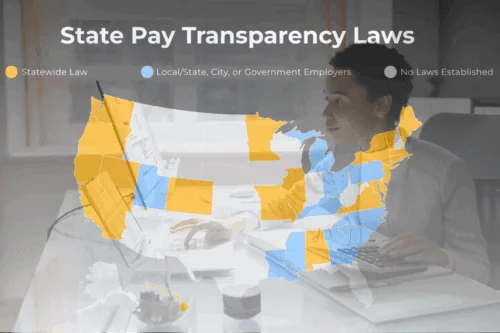Welcome to a comprehensive guide designed to inform and inspire potential entry-level job seekers interested in the powerful role of individual advocacy groups. Whether you’re passionate about environmental issues, social justice, or community development, understanding the function and influence of these groups can significantly impact your career path and personal growth.
Why Advocacy Matters
In today’s world, advocacy groups are more important than ever. They give a voice to the underrepresented and drive changes that align with equitable values. As a potential job seeker or someone interested in social causes, this guide will help you understand how these groups operate, their challenges, and how you can get involved.
Embark on this journey to discover the dynamic world of individual advocacy groups and the various opportunities they offer. Whether you’re looking to join an existing organization or start your own initiative, this guide provides the essential information to get you started on the right foot. Let’s explore how these groups shape our society and how you can contribute to their impactful work.
Understanding Individual Advocacy Groups
Individual advocacy groups are vital entities that champion the rights and needs of particular groups within society. They are crucial in driving change and influencing policies directly impacting their target demographics.
What is an Individual Advocacy Group?
An individual advocacy group is an organization dedicated to supporting the interests or causes of its members or a specific group of people. These groups can range from small community-based groups to large national organizations. Their primary focus is to advocate for rights, provide support, and ensure that their voices are heard at various levels of decision-making processes.
Key Functions of Individual Advocacy Groups
- Representation: They represent the interests of specific groups to policymakers, businesses, and the public, ensuring that their needs and concerns are considered.
- Educational Outreach: Educating members and the public about their rights and relevant issues is crucial. This includes workshops, seminars, and public campaigns.
- Support Services: Many individual advocacy groups offer direct support and services to their members, which may include legal advice, counseling, and networking opportunities.
For example, groups focused on disability rights work tirelessly to ensure access to necessary services and advocate for equal employment and social participation opportunities. Similarly, groups advocating for racial equality concentrate on eradicating systemic racism and promoting fairness across various sectors.
Effective Advocacy Strategies
Successful individual advocacy groups employ strategies such as lobbying, public campaigning, and partnerships with other organizations to amplify their impact. Collaborations with other advocacy groups or international bodies can also provide additional resources and a broader platform to effect change.
These groups’ effectiveness in advancing their causes relies heavily on active participation and engagement from their base. Thus, the power of an individual advocacy group lies in its members’ commitment and the collective effort to advance pivotal issues.
To learn more about how advocacy shapes public policy, consider exploring detailed examples of advocacy in action. For those interested in environmental advocacy, understanding the legal frameworks is essential. More information is available at EPA – Laws & Regulations.
The Role of Individual Advocacy Groups in Society
Individual advocacy groups significantly influence various aspects of society, helping shape laws, culture, and daily practices that reflect their constituents’ needs and values.
Cultural Impact
These groups fight for rights and services and are critical in changing societal attitudes towards their focus issues. Awareness campaigns and media engagement help shift public perceptions, fostering a more inclusive society.
Policy Influence
One of the primary roles of individual advocacy groups is to influence policy at local, state, and national levels. They drive legislative and regulatory changes crucial for their cause by lobbying policymakers and engaging in public discourse.
- Legislative Advocacy: Advocacy groups often draft, promote, or oppose legislation that affects their members. This direct involvement in the legislative process ensures that those in power hear and consider their voices.
- Regulatory Advocacy: They push for favorable regulations and standards that protect and advance their members’ rights and interests.
Economic Contributions
Aside from their advocacy, these groups can also be significant economic players. They create jobs through their operations, fund research, and development, and can even influence market trends by advocating for responsible business practices.
The ripple effects of individual advocacy groups extend beyond immediate social or political realms, deeply embedding their causes into the fabric of everyday life. For instance, women’s rights movements have secured legal rights and revolutionized workplace environments across many industries.
Understanding these roles helps to appreciate the depth and breadth of change that individual advocacy groups can engender. Societies grow and evolve when these groups effectively advocate for the advancement of their causes.
Benefits of Joining an Individual Advocacy Group
Joining an individual advocacy group offers numerous personal and communal advantages. These collaborations benefit both members and society greatly.
Personal Empowerment
Being part of an individual advocacy group facilitates personal growth and empowerment. Members gain valuable knowledge about their rights and how to assert them effectively.
- Educational Opportunities: Members learn about laws, resources, and strategies for advocacy.
- Skill Development: Engaging in activities enhances public speaking, negotiation, and organizing skills.
Community Support
Individual advocacy groups provide a strong sense of community and support. This is crucial for individuals who might otherwise feel isolated in their struggles.
- Networking: Members meet others who share similar interests and goals, which can lead to lasting friendships and professional connections.
- Support Systems: Groups offer emotional and sometimes financial support to challenged members.
Increased Influence
There’s strength in numbers. Joining an individual advocacy group amplifies one’s voice in debates and decision-making processes.
- Policy Change: Groups have a better chance of influencing policy when they present a united front.
- Greater Visibility: Collective actions attract more attention, paving the way for broader change.
Moreover, participating in advocacy efforts can yield significant societal impacts, fostering a culture of involvement and responsibility. Therefore, the benefits extend beyond individual gains, contributing to a healthier, more dynamic community. Insights into how personal involvement can lead to wide-ranging reforms are illustrated by the ACLU’s focus on civil liberties.
Finally, for those searching for information on how to get involved, resources are available through the U.S. Government’s Executive Agencies, which provide information on public initiatives and how to engage effectively.
Steps to Engage with an Individual Advocacy Group
Engaging with an individual advocacy group is straightforward and can lead to impactful contributions. Here are key steps to follow.
Research and Identify
Begin by researching groups that align with your interests or concerns. Focus on their missions, activities, and the impact they’ve made.
- Online Search: Use search engines to find groups by keywords related to your interests.
- Community Boards: Look for notices in community centers or online forums.
Contact and Inquire
Once you’ve identified a potential group, reach out to them. Most groups are welcoming and eager to provide information about how you can get involved.
- Email or Call: Initial contact is usually through email or a phone call.
- Attend Meetings: Most groups hold regular meetings which are open to potential new members.
Attend Events
Attending public events hosted by the group is a great way to understand their work and network with members.
- Workshops: These provide education on the group’s focus areas.
- Rallies: Larger public gatherings to promote the group’s causes.
Volunteer
If you’re ready to commit, volunteering is an excellent way to participate and actively contribute to the group’s goals.
- Skills Contribution: Offer skills that can help advance the group’s objectives.
- Administrative Support: Help with day-to-day tasks or event organization.
Getting involved in an individual advocacy group is not just about supporting others; it’s also enriching your own life through active civic participation. Consider reading about the volunteer opportunities listed on government websites for ideas on what you can do.
For further detailed guidance on engaging in social advocacy, check out resources offered by leading nonprofit organizations.
Common Challenges Faced by Individual Advocacy Groups
While individual advocacy groups play a crucial role in societal change, they often encounter several challenges that can hinder their efforts.
Limited Resources
Many groups face resource constraints, which can limit their activities and reach.
- Funding: Securing consistent funding is a major hurdle for many nonprofits.
- Staffing: Limited staff can overload existing team members, reducing efficiency.
Political and Social Resistance
Advocacy groups often meet resistance from various sectors, including political entities and opposing public groups.
- Legislative Barriers: Laws and regulations can limit advocacy efforts, particularly in highly regulated areas.
- Public Opposition: Misinformation and societal biases can lead to public opposition to the group’s goals.
Sustainability Issues
Maintaining momentum over time, especially without visible short-term victories, can be challenging.
- Member Burnout: Continuous advocacy without clear wins can demoralize members.
- Leadership Succession: Ensuring smooth leadership transitions is critical for long-term success.
Despite these challenges, many groups find innovative ways to overcome hurdles and continue their important work. For example, partnerships with educational institutions can provide additional resources and a platform for advocacy.
Additionally, learning from successful strategies other groups employ can offer valuable insights.
Important Legislation Affecting Individual Advocacy Groups
Individual advocacy groups must navigate various legal landscapes that directly influence their operations and effectiveness.
Federal Regulations
Federal laws set broad parameters within which advocacy groups must operate, particularly regarding fundraising and lobbying activities.
- The Lobbying Disclosure Act: Requires detailed reporting of lobbying activities and expenditures.
- The Federal Election Campaign Act: Regulates political campaign fundraising and spending.
State and Local Laws
Laws at the state and local levels can vary significantly, affecting how groups engage in advocacy depending on their location.
- State Registration Laws: Many states require groups to register before engaging in fundraising.
- Local Ordinances: Local ordinances may restrict where and how advocacy can occur, such as limiting public demonstrations.
Impact on Advocacy Efforts
These laws can profoundly impact how individual advocacy groups plan and execute their strategies.
- Compliance Costs: Adhering to complex legal requirements often requires significant financial and time investments.
- Strategic Adaptations: Groups must often adjust their tactics based on the legal environment to avoid penalties and maximize impact.
This legal framework also underscores the importance of staying informed and adaptable. Groups must have current knowledge of the law and, if necessary, legal assistance to navigate these waters effectively.
Visiting sites like the Equal Employment Opportunity Commission can be incredibly beneficial for a more detailed understanding of how federal and state laws interact with advocacy work. Resources like ACS Law also provide insightful legal analyses pertinent to advocacy groups.
Case Studies: Successful Individual Advocacy Group Examples
Examining successful individual advocacy groups provides valuable insights into effective practices and strategies that drive change.
Environmental Advocacy: Green Action Fund
The Green Action Fund has been pivotal in promoting environmental laws across the U.S. Their strategy integrates grassroots activism with robust legal challenges.
- Key Achievements: Spearheaded important legislative reforms for renewable energy subsidies and protections against industrial pollution.
- Strategy: Extensive use of public campaigning and legal action.
Racial Equality: Unity Network
Unity Network has made significant strides in addressing racial discrimination through education and policy advocacy.
- Key Initiatives: Developed educational programs that are incorporated into school curriculums nationwide to promote diversity and inclusion.
- Influence: Worked with legislative bodies to enforce stricter penalties on hate crimes.
Consumer Rights: Buyers’ Shield
Buyers’ Shield empowers consumers by advocating for greater transparency and fairness in the retail and services sectors.
- Major Wins: Instrumental in the passage of consumer protection laws that mandate clear labeling of products.
- Approach: Focuses on lobbying and public education campaigns to raise awareness about consumer rights.
These examples highlight the power of specialized focus and strategic campaigning in achieving lasting impacts. By studying these models, new groups can glean approaches that might resonate with their missions and goals. Further exploration of successful advocacy can be found within dedicated resources like the Institute for Social Change, which offers courses and seminars on effective advocacy strategies.
FAQs
Here are answers to some frequently asked questions about individual advocacy groups.
What is an individual advocacy group?
An organization that supports specific causes or groups of people.
How can I join an individual advocacy group?
Research groups that align with your interests contact them and attend their events or meetings.
Are there costs involved in joining?
Some groups may require a membership fee, while others are free to join.
Can I start my own advocacy group?
Yes, you can start your own group if you identify a need and are ready to organize people and resources around it.
How do advocacy groups influence policy?
They engage in lobbying, public campaigns, and partnerships to effect policy changes.
What challenges do advocacy groups face?
Common issues include limited resources, political resistance, and sustaining long-term engagement.
How can I support an advocacy group without joining?
You can donate, participate in their public events, or spread their message through your network.
Do advocacy groups only operate at the national level?
No, depending on their focus and capabilities, they operate at local, state, and national levels.
These questions cover many basics, but always feel free to contact specific groups directly for more personalized information.
Conclusion
Individual advocacy groups are crucial in fostering societal progress and empowering specific groups. Individuals can contribute significantly to promoting equity, justice, and community welfare by participating in or supporting these organizations. These groups educate, advocate, and influence policies impacting daily lives and the broader society.
Join Diversity Employment
If you’re passionate about diversity and advocacy, consider joining Diversity Employment. It’s a platform designed to connect individuals with organizations committed to diversity and inclusion. By joining, you can actively participate in or support these crucial movements. Additionally, Diversity Employment provides resources, job listings, and networking opportunities that can help you make a meaningful impact in your career and community.
Let your voice be heard and make a difference. Join our diversity job board today and be part of a movement towards a more inclusive and diverse future.




